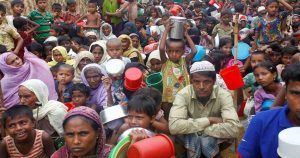The National Economic Council on Tuesday approved Seventh Five- Year Plan (SFYP) with a target to minimise economic disparity by generating new jobs and achieve sustainable development maintaining an average 7.4 percent growth during the period.
Taka 31,903 billion will be required for implementation of the SFYP, of which 90.4 percent (Taka 28,851 billion) will be mobilised from domestic sources and the remaining 9.6 percent (Taka 3,052 crore) from external sources.The government earlier framed the Perspective Plan (2010-2021) targeting double-digit growth by 2021. As per the plan, the government prepared the 6th FYP. The 7th FYP will be implemented in the next 5 years until FY 2020.
The Awami League government restored the 5-Year planning exercise that was dropped following the introduction of the open market economy by the Bnp government in 1991. During the closing years of the first 5-year tenure a national economic strategy was framed at the initiative of then state minister for planning Dr. Abdul Moyeen Khan.
Way back in the late seventies under the government of late president Ziaur Rahman the command economy left by the previous government with all mills and ifactories taken under state control was turned into a mixed economy. Then adviser for finance Dr. MN Huda had first taken up an 2-year ‘Approach Plan’ before launhing the Secod Five Year Plan in 1978. The first five-year plan had proved a failure and the members of the planning commission had deserted the body one putting the blame for its failure on others.
The new plan approved on Tuesday has also set target of creating employment and skill development opportunities, supplying credit for SME development and many other ways to people for becoming more productive.
Alongside growth, the SFYP Plan will put emphasise on social protection, urban transition and a sustainable development pathway resilient to disaster and climate change.
The approval came at its meeting held at NEC conference room in city’s Sher-e-Bangla Nagar with NEC chairperson and Prime Minister Sheikh Hasina in the chair.
Planning Minister A H M Mustafa Kamal, after the meeting, briefed newsmen about the outcome.
In the meeting, Kamal said “Prime Minister Sheikh Hasina has directed the authorities concerned to frame next Perspective Plan (FY21-FY40) to upgrade Bangladesh as a developed country by 2041”.
State Minister for Finance and Planning M A Mannan was present among others at the briefing.
Kamal informed fast track projects would be implemented as per schedule to help move the country on higher growth trajectory during the SFYP implementation.
In addition, construction of four mega projects, including the Padma Bridge and Dhaka elevated expressway, is likely to be completed in next five years as the government in the SFYP has set the completion target for these projects by 2020.
The two other projects include Mass Rapid Transport (MRT) in Dhaka and the Liquefied Natural Gas (LNG) terminal in Matarbari, Cox’s Bazar.
Member of General Economics Division (GED) of the Planning Commission Prof Dr Shamsul Alam presented the summary of the SFYP, which starts in fiscal 2015-16 and ends in 2019-20 with the theme “Accelerating Growth, Empowering Citizens”.
Towards the journey, the government will contribute Taka 7,252 billion while investment from the private sector will be Taka 24,651 billion, as per the estimate.
The SFYP estimated about 1.29 crore new jobs would be created in the new five year plan, although 99 lakh people are expected to join the workforce during the period. Domestic market would accommodate 1.09 crore workforce while the remaining would be sent abroad.
In the next five years, the average GDP growth has been estimated at 7.4 percent. The GDP growth will cross 7 percent this fiscal while 8 percent in the last year of the plan.
The plan seeks to reduce poverty rate from 24.8 percent to 18.6 percent and extreme poverty to around 8.9 percent by FY2020.
The Planning Minister also stressed that inflow of FDI in Bangladesh needs to be increased from current level of about 1 percent of GDP to 3 percent of GDP for achieving the financing of the investment target of the 7th plan.
The other key highlights of the SFYP includes increasing the contribution of manufacturing sector to 21 percent of GDP by 2020, substantial improvement of exports to $ 54 billion, achieving a trade-GDP ratio of 50 percent by FY20, raising total revenue collection from 10.7 percent of GDP to 16.1 percent by FY20, raising public expenditure to 21.1 percent of GDP by FY20, increase of FDI inflow to $9.6 billion by FY20, power generation capacity to 23,000 MW by 2020, increasing power coverage to 96 percent, productive forest coverage to 20 percent, land zoning for sustainable land and increasing earnings from ICT, travel and tourism from $1.5 billion to $6 billion.
About creating big labour market abroad, the Planning Minister said although the Middle East countries like Saudi Arabia, UAE, Bahrain, Qatar, UAE are in a bit awkward position due to the fall in fuel price, the government is hopeful there would be more penetration in the labour market abroad during new five year plan. – News Desk




